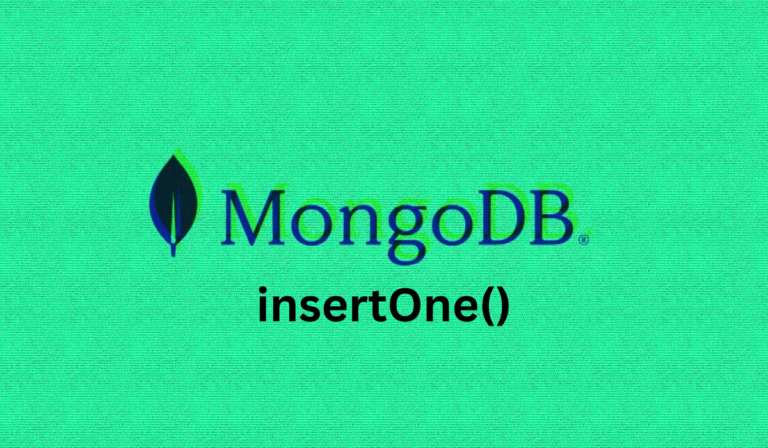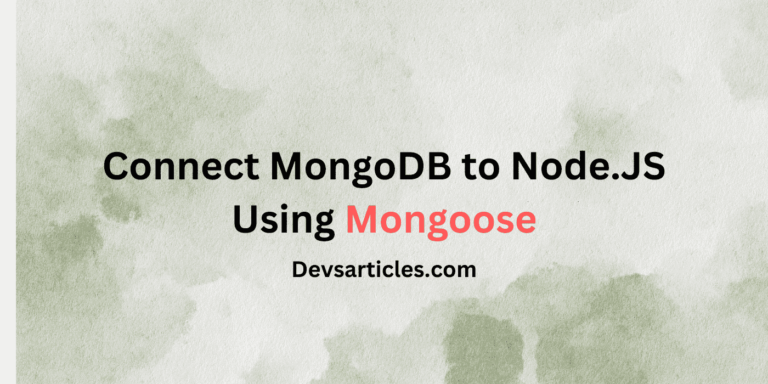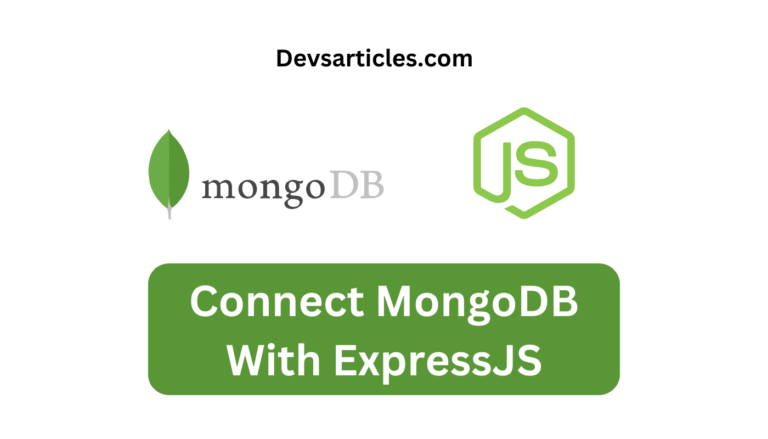MongoDB vs PostgreSQL : Exploring Complete Data Models

In databases, two major players stand out: MongoDB and PostgreSQL. Although both are used for storing data, they utilize different techniques. MongoDB uses a flexible document-based model, whereas PostgreSQL follows a more structured, table-based approach. This article aims to delve into these two contrasting paradigms and help you understand which one would be more suitable for your application needs.Let’ explore MongoDB vs PostgreSQL
Table of Contents
Understanding MongoDB’s Flexible Document-Based Model
Think of MongoDB as a virtual filing cabinet where data is saved as documents. These documents are comparable to files that are stored in a folder, each containing different fields and data types. MongoDB’s ability to adapt different types of data within the same collection without requiring a predefined schema is what makes it so fascinating.
If you’re creating an e-commerce platform, MongoDB’s document model is a perfect fit. For example, if your products come in different sizes, colors, and prices, you can represent each product as a document. This allows you to easily adapt to changes in product specifications without having to modify the entire database structure. It’s like having a filing system that can adapt new types of documents as your business develops.
PostgreSQL’s Fixed Table-Based Structure
PostgreSQL differs from other database management systems in that it operates on a structured table-based format similar to a spreadsheet. In this format, data is arranged in rows and columns, and each table requires a predetermined schema. This structured approach guarantees data consistency and implements integrity conditions, making it ideal for applications where accuracy is of the highest importance.
Imagine a financial application that requires a high degree of accuracy and reliability. In this scenario, PostgreSQL offers important support for transactions, constraints, and relational features. It’s like filling out a form where certain fields must be filled in correctly to confirm the financial records remain trustworthy and secure.
Choosing the Right Model for Your Application
- MongoDB: If you need a database that is flexible and scalable, MongoDB is a good choice. It works well with unstructured data or data that changes frequently, thanks to its document model. This makes it ideal for projects that require dynamic data models, such as content management systems, applications with real-time analytics, or any other project where the data model may grow over time.
- PostgreSQL: Opt for PostgreSQL when data integrity and relational features are critical. Applications requiring ACID (Atomicity, Consistency, Isolation, Durability) compliance, complex queries, and strict keeping to schema conditions benefit from PostgreSQL’s structured approach. Use it for financial applications, e-commerce platforms with stable product attributes, or systems where data consistency is essential.
MongoDB vs PostgreSQL : Query Languages and Performance
Efficient querying is important to retrieve and manipulate data effectively. MongoDB Vs PostgreSQL, are two popular databases that offer different query languages. MongoDB’s querying is based on JSON while PostgreSQL uses SQL. It’s important to understand these query languages and how they affect query performance based on factors like indexing, data volume, and query complexity. In this section, we will explore the differences between these databases and how to optimize query performance.
MongoDB’s JSON-Based Query Language
MongoDB is a database system that is popular among developers because its query language uses JSON (JavaScript Object Notation), a language familiar to most developers. This query language is flexible and intuitive, allowing for easy querying and manipulation of complex nested data structures. With MongoDB, queries are written using JSON-like syntax, which makes it simple to perform powerful queries on JSON documents.
For example, to find all documents where the “age” field is greater than 30, you’d write a query like this:
db.collection.find({ "age": { "$gt": 30 } })MongoDB’s query language excels in scenarios where data is highly unstructured or rapidly evolving. Its schema-less nature adapts dynamic data models seamlessly, offering agility and adaptability.
PostgreSQL’s SQL: The Universal Query Language
PostgreSQL, on the other side, depends on SQL (Structured Query Language)—a language deeply rooted in the database world. SQL offers a standardized way to interact with relational databases, with a rich set of features for querying, updating, and managing data.
To achieve the same task in PostgreSQL, finding records with age greater than 30, you’d use a SQL query like this:
SELECT * FROM table WHERE age > 30;SQL’s declarative nature outlines away the implementation details, allowing users to focus on expressing their intent rather than specifying how to retrieve the data. This makes SQL queries highly expressive and concise, particularly for complex joins and aggregations.
Comparing Query Performance
Indexing:
- MongoDB: Supports indexing on fields within documents, improving query performance for frequently accessed fields.
- PostgreSQL: Offers a wide range of indexing options, including B-tree, hash, and GiST (Generalized Search Tree), improving query speed for various use cases.
Data Volume:
- MongoDB: Excels in handling large volumes of unstructured data, thanks to its sharding and replication capabilities.
- PostgreSQL: Efficiently manages structured data, making it suitable for applications with complex relational data models.
Query Complexity:
- MongoDB: Performs well with simple, single-document queries, but may struggle with complex join operations common in relational databases.
- PostgreSQL: Excels in handling complex queries involving multiple joins, aggregations, and subqueries, with its robust relational capabilities.
MongoDB vs PostgreSQL in Scalability and Performance Scaling
When it comes to handling scalability and performance scaling, MongoDB and PostgreSQL use different strategies to accommodate growing demands. Let’s explore how each database handles scalability, including techniques like horizontal scaling (adding more servers) and vertical scaling (upgrading hardware), along with specific approaches such as sharding in MongoDB and partitioning in PostgreSQL for distributing data across multiple nodes.
MongoDB: Horizontal and Vertical Scaling
MongoDB shines in scalability, offering robust solutions for both horizontal and vertical scaling.
Horizontal Scaling In MongoDB
- Sharding: MongoDB uses sharding, a technique for distributing data across multiple machines to achieve horizontal scalability. With sharding, MongoDB divides data into chunks and distributes them across a cluster of servers called shards. Each shard holds a subset of the data, allowing MongoDB to handle large volumes of data and high throughput.
- Automatic Balancing: MongoDB’s sharding architecture automatically balances data distribution across shards, confirming uniform utilization of resources and optimal performance.
Vertical Scaling In MongoDB
- Vertical Scaling: MongoDB also supports vertical scaling, where you upgrade hardware resources (CPU, RAM, storage) of individual server nodes to handle increased workload. While vertical scaling can improve performance, it has limitations in terms of scalability compared to horizontal scaling.
PostgreSQL: Scaling Vertically with Options for Horizontal Expansion
PostgreSQL, known for its robust relational capabilities, offers several options for scaling, primarily focusing on vertical scaling.
Vertical Scaling
- Upgrading Hardware: PostgreSQL supports vertical scaling, allowing you to improve server performance by upgrading hardware resources such as CPU, RAM, and storage. This approach can temporarily free performance bottlenecks but may have limitations in long-term scalability.
Horizontal Scaling
- Partitioning: PostgreSQL provides partitioning, a method for splitting large tables into smaller, manageable chunks called partitions. Each partition can be stored on separate physical storage devices or servers, allowing horizontal scaling by distributing data across multiple nodes.
- Custom Sharding Solutions: While PostgreSQL doesn’t have built-in sharding like MongoDB, it offers flexibility for implementing custom sharding solutions using techniques like table inheritance or external tools.
Choosing the Right Scaling Strategy
When deciding between MongoDB and PostgreSQL for scalability and performance scaling, consider your specific requirements and constraints.
Choose MongoDB
- If you expect rapid data growth and need seamless horizontal scaling.
- If your application requires flexible schema and handles unstructured or semi-structured data.
- If automatic data distribution and load balancing are critical for your workload.
Choose PostgreSQL
- If your application primarily deals with structured data and requires complex relational queries.
- If vertical scaling meets your immediate performance needs and data volume is manageable.
- If you prefer a traditional relational database with strong ACID compliance and transactional support.
MongoDB vs PostgreSQL For Navigating Transactions and ACID Compliance
Transaction support and ACID compliance play a crucial role in securing data integrity and reliability. MongoDB and PostgreSQL, two major database systems, offer differing techniques for these fundamental aspects. Let’s dive into the differences in transaction support and ACID compliance between MongoDB and PostgreSQL, and explore scenarios where each excels based on the importance of strong transactional support versus eventual consistency.
MongoDB Transaction Support, ACID Compliance, Scenarios for MongoDB
MongoDB, a NoSQL database, prioritizes flexibility and scalability, often at the expense of traditional ACID compliance and strong transactional support.
- Limited Transactions: MongoDB initially lacked support for multi-document transactions across multiple collections in distributed environments. However, recent versions have introduced limited support for multi-document transactions, primarily within a single shard.
- Eventual Consistency: MongoDB adopts an eventually consistent model, where data changes multiply asynchronously across distributed nodes. While this approach improves scalability and performance, it sacrifices immediate consistency and may lead to eventual data convergence.
- High Write Throughput: MongoDB excels in scenarios requiring high write throughput and scalability, such as real-time analytics or content management systems.
- Flexible Schema: Applications with dynamic or growing data models benefit from MongoDB’s schema-less nature, allowing agile development and schema evolution.
PostgreSQL: Upholding Strong Transactional Support and ACID Compliance
PostgreSQL, a powerful relational database, prioritizes data consistency and transactional reliability, sticking to the principles of ACID (Atomicity, Consistency, Isolation, Durability).
- Full ACID Compliance: PostgreSQL offers robust support for multi-statement transactions, nested transactions, and savepoints, providing data consistency and integrity.
- Serializable Isolation: PostgreSQL provides the highest level of transaction isolation, allowing concurrent transactions to execute safely without interference.
- Immediate Consistency: PostgreSQL guarantees immediate consistency, confirming that transactions are executed reliably and predictably.
- Data Integrity: PostgreSQL implements referential integrity constraints, foreign key relationships, and other data integrity rules to maintain the reliability and accuracy of stored data.
- Financial Transactions: Applications dealing with financial transactions, where data integrity and ACID compliance are important, benefit from PostgreSQL’s strong transactional support.
- Complex Queries: PostgreSQL excels in systems requiring complex joins, aggregations, and relational operations, making it suitable for analytical workloads and data warehousing.
MongoDB vs PostgreSQL Case Studies
MongoDB Case Study – The Weather Company (IBM)
The Weather Company, an IBM subsidiary, operates one of the world’s largest weather data platforms, delivering forecasts and weather insights to millions of users globally. They use MongoDB to handle large amounts of weather data efficiently and deliver real-time updates to users.
Factors Leading to MongoDB:
- Scalability: The Weather Company required a database that could scale horizontally to adapt the ever-growing volume of weather data.
- Flexibility: MongoDB’s document-based model provided the flexibility needed to store diverse weather data attributes, including temperature, humidity, wind speed, and forecasts.
- Real-time Updates: MongoDB’s support for real-time updates and sharding capabilities enabled The Weather Company to deliver timely weather forecasts and alerts to users worldwide.
Benefits Of MongoDB:
- Scalability: MongoDB’s horizontal scaling capabilities allowed The Weather Company to handle massive volumes of weather data efficiently, providing reliable performance during peak usage.
- Flexibility: MongoDB’s flexible schema is adapted to changes in data structures and growing weather data requirements without downtime or schema migrations.
- Real-time Updates: MongoDB’s support for real-time updates and sharding facilitated the delivery of timely weather updates to users, improving user experience and satisfaction.
Challenges With MongoDB:
- Complexity: Managing a distributed MongoDB cluster at scale requires expertise in deployment, monitoring, and maintenance, posing operational challenges.
- Data Consistency: Providing eventual consistency across distributed MongoDB nodes required careful design and implementation to prevent data divergence or inconsistencies.
PostgreSQL Case Study – Instagram (Facebook)
Instagram, a social media platform owned by Facebook, handles billions of photos, videos, and user interactions daily. They depend on PostgreSQL as their primary database for storing user data, activity logs, and metadata.
Factors Leading to PostgreSQL:
- ACID Compliance: Instagram required strong transactional support and immediate consistency to maintain data integrity, enforce referential integrity constraints, and ensure reliable user interactions.
- Relational Queries: PostgreSQL’s support for complex relational queries and advanced indexing options suited Instagram’s need for analyzing user interactions, trending content, and personalized recommendations.
- Community Support: PostgreSQL’s active community, rich ecosystem of extensions, and robust documentation provided valuable resources and support for Instagram’s database operations.
Benefits of PostgreSQL:
- Data Integrity: PostgreSQL’s ACID compliance and support for transactions assured the reliability and consistency of user data, improving trust and user experience on the platform.
- Complex Queries: PostgreSQL’s advanced query optimization capabilities allowed Instagram to perform complex analytics and generate personalized content recommendations efficiently.
- Community Support: Access to a vibrant PostgreSQL community and ecosystem of tools and extensions empowered Instagram’s database team to address challenges effectively and optimize database performance.
Challenges With PostgreSQL:
- Scaling: Scaling PostgreSQL horizontally to handle the exponential growth in user data posed challenges, requiring careful sharding strategies and optimizations to maintain performance.
- Operational Complexity: Managing a large-scale PostgreSQL deployment with high availability, disaster recovery, and data replication required significant operational expertise and resources.
| PostgreSQL | MongoDB |
| ACID Transactions | ACID Transactions |
| Table | Collection |
| Row | Document |
| Column | Field |
| Secondary Index | Secondary Index |
| JOINs, UNIONs | Embedded documents, $lookup & $graphLookup, $unionWith |
| Materialized Views | On-demand Materialized Views |
| GROUP_BY | $group Aggregation Pipeline operator |
Conclusion
In conclusion, choosing between MongoDB and PostgreSQL burns down to understanding your application’s specific requirements and priorities.
If you prioritize flexibility, scalability, and handling unstructured or rapidly growing data, MongoDB’s document-based model is an excellent choice. Its schema-less nature allows for agile development and seamless adaptation to changing business needs. MongoDB excels in scenarios like content management systems, real-time analytics, and applications where data models may evolve over-time.
On the other hand, if data integrity, relational features, and strong transactional support are important, PostgreSQL’s structured, table-based approach is more suitable. PostgreSQL offers robust ACID compliance, complex query capabilities, and support for relational features like joins and constraints. It’s ideal for applications requiring strict observation to schema conditions, such as financial systems, e-commerce platforms with stable product attributes, or systems where data consistency is critical.
Both databases have their strengths and weaknesses, and the choice ultimately depends on your specific use case, workload characteristics, and organizational priorities. By understanding the differences between MongoDB and PostgreSQL in terms of data modeling, query languages, scalability, transaction support, and real-world case studies, you can make an informed decision that aligns with your application’s needs and future growth.
FAQs
What is MongoDB, and what is PostgreSQL?
MongoDB and PostgreSQL are both popular database management systems, but they different in their underlying data models and query languages. MongoDB is a NoSQL, document-oriented database, known for its flexibility and scalability. PostgreSQL, on the other hand, is a relational database management system (RDBMS), sticking to the SQL (Structured Query Language) standard.
How do MongoDB and PostgreSQL handle scalability?
MongoDB offers both horizontal and vertical scaling. It uses sharding to distribute data across multiple servers horizontally, and it supports vertical scaling by upgrading individual server nodes. PostgreSQL primarily focuses on vertical scaling, allowing you to improve server performance by upgrading hardware resources. It also offers partitioning for horizontal scaling, with some customization required.






